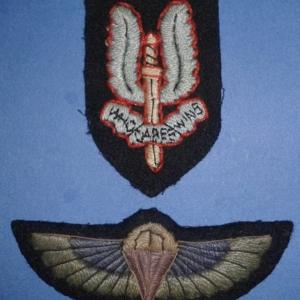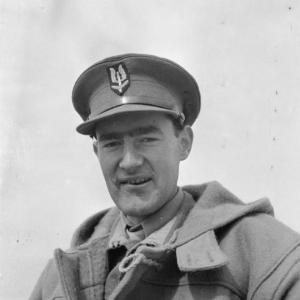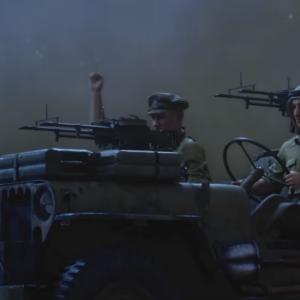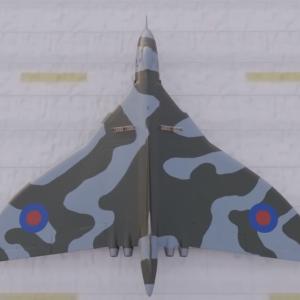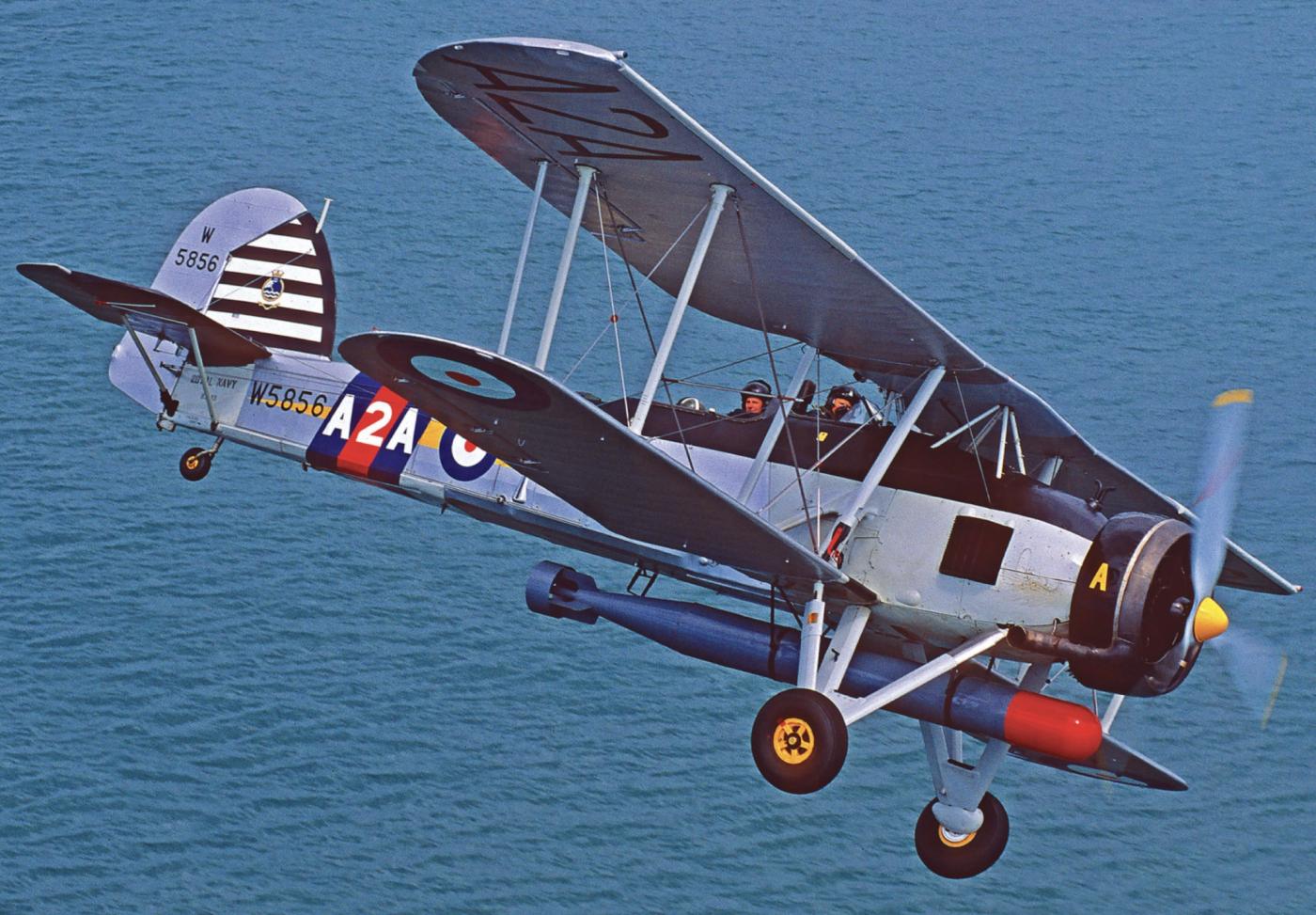
Fairey swordfish
The Fairey Swordfish was one of the most iconic naval aircraft of the Second World War, not because of its speed or technological innovation, but because of its remarkable effectiveness in roles for which it seemed, on the surface, utterly obsolete. Designed by the Fairey Aviation Company in the early 1930s, the Swordfish began as a private venture. Initially designated TSR I (Torpedo-Spotter-Reconnaissance), it was designed to meet Air Ministry Specification S.9/30. The first prototype, flown in 1933, featured a fabric-covered metal frame and a single radial engine. The final version, known as the Swordfish I, made its first flight in April 1934.
Despite its antiquated biplane design, the Swordfish had several advantages. It was highly maneuverable, capable of taking off from small carriers and even merchant ships fitted with catapults. Its slow speed, ironically, gave it a stable bombing platform and allowed it to operate effectively in low-visibility or high-sea states. The aircraft could operate in rough weather and carry a versatile weapons load. The Royal Navy was quick to adopt it for the Fleet Air Arm, and it entered service in 1936. Its performance may have seemed outdated by the start of the war, but its adaptability ensured it remained in front-line service throughout the conflict.
Fairey Aviation, based in Hayes, Middlesex, was responsible for the bulk of Swordfish production. However, as demand increased during World War II, additional production was undertaken by Blackburn Aircraft at their Sherburn-in-Elmet and Brough facilities. In total, over 2,390 Swordfish aircraft were produced, with several variants, including the Swordfish I, II, and III, each incorporating improvements such as metal lower wings or airborne radar.
The Swordfish was designed for a multi-role capacity, fulfilling torpedo bombing, reconnaissance, and anti-submarine warfare roles. Its primary offensive capability lay in its ability to carry and deploy an 18-inch (457 mm) torpedo, usually the British Mark XII. This torpedo was launched at low altitude and required a skilled crew to bring the slow aircraft close enough to the target while avoiding defensive fire. In addition to the torpedo, the Swordfish could carry bombs, depth charges, mines, or flares under the wings and fuselage.
For defense, the aircraft typically mounted a single fixed forward-firing .303 inch Vickers machine gun and one or two .303 inch Lewis or Vickers K machine guns operated by the observer or rear gunner. Some variants also featured rocket projectiles under the wings for attacks against submarines and shipping later in the war.
The Swordfish II introduced metal-skinned lower wings to support rocket armament, and the Swordfish III added a radar dome under the fuselage for night and anti-submarine operations. Despite lacking speed—it had a top speed of around 139 mph (224 km/h)—the Swordfish's ruggedness, reliability, and slow-speed handling made it invaluable. It could take off with a full weapons load from the shortest of decks and land safely even in poor conditions.
The crew typically consisted of three: pilot, observer (who also served as a navigator and bomb aimer), and rear gunner. Communication between crew members was often done through hand signals or intercom, and the aircraft’s open cockpit design exposed the crew to the elements, which could be a major factor during long flights over cold Atlantic waters.
The Swordfish served in a variety of theaters during the Second World War, proving itself repeatedly in both offensive and defensive roles. It was deployed from Royal Navy aircraft carriers, escort carriers, and even catapult-equipped merchant ships. Its primary roles were torpedo bombing, maritime reconnaissance, convoy escort, and anti-submarine patrols.
In the early stages of the war, the Swordfish played a central role in several dramatic and strategically significant operations. Despite the introduction of faster monoplanes and jet aircraft, the Swordfish continued to operate effectively due to its unique advantages in maritime and low-speed scenarios. The aircraft was active in the Mediterranean, Atlantic, and Arctic theaters, and also operated in the Indian Ocean and the Far East later in the war.
The Royal Canadian Navy and other Allied forces also made limited use of the Swordfish, particularly for convoy protection in the North Atlantic. It was often launched from small escort carriers and played a key role in diminishing the U-boat threat that endangered Allied supply lines. Swordfish equipped with radar and rockets proved particularly deadly to submarines attempting to surface at night to recharge batteries.
By 1944, newer aircraft like the Fairey Barracuda and Grumman Avenger were gradually replacing the Swordfish in front-line roles, but it continued to fly in support and training roles until the end of the war. Its final combat missions involved convoy protection and anti-submarine warfare well into 1945.
One of the most famous actions involving the Swordfish was the attack on the Italian fleet at Taranto on the night of November 11–12, 1940. Twenty-one Swordfish aircraft launched from the aircraft carrier HMS Illustrious and struck the Italian fleet anchored in Taranto harbor. They successfully disabled three Italian battleships (Conte di Cavour, Littorio, and Caio Duilio), significantly altering the naval balance in the Mediterranean. This raid demonstrated the vulnerability of capital ships to air attack and directly influenced Japanese planning for the attack on Pearl Harbor.
Another historic engagement came during the pursuit of the German battleship Bismarck in May 1941. Swordfish aircraft from HMS Ark Royal attacked the Bismarck in the Atlantic. Despite terrible weather and the aircraft's limitations, one torpedo hit disabled the Bismarck’s rudder, allowing British surface ships to close in and eventually sink her. This critical blow was struck by an aircraft that was technologically outdated by nearly a decade, underscoring the Swordfish’s continued effectiveness.
Swordfish squadrons were also instrumental in protecting convoys from German U-boats during the Battle of the Atlantic. Operating from escort carriers, Swordfish with radar and rockets hunted submarines that posed a dire threat to Allied supply routes. These aircraft were directly responsible for the destruction of dozens of U-boats throughout the war.
A further daring mission occurred during Operation Ironclad, the invasion of Vichy-controlled Madagascar in 1942. Swordfish bombers attacked enemy positions and shipping around Diego Suarez, including a successful torpedo strike against the Vichy French submarine Bévéziers. It was another demonstration of the Swordfish’s versatility and effectiveness in unconventional naval warfare scenarios.
Even in its final years of operation, the Swordfish continued to evolve. Its simplicity and adaptability made it easy to maintain, and its reliability earned the respect of the pilots who flew it. Though by war’s end it had become a relic of an earlier aviation age, its combat record was anything but antiquated. The aircraft that many dismissed as a "stringbag" had proven its mettle time and again in the harshest of conditions and against formidable odds.

